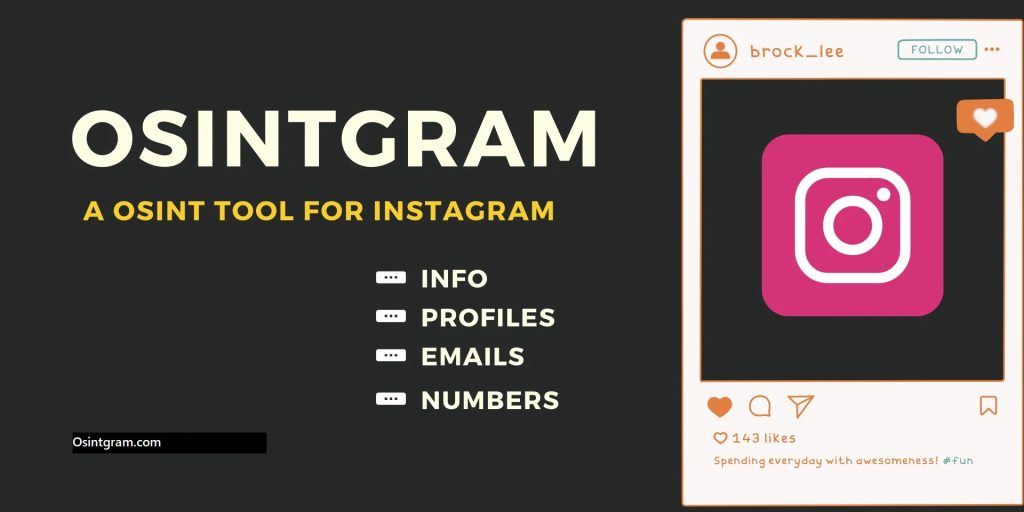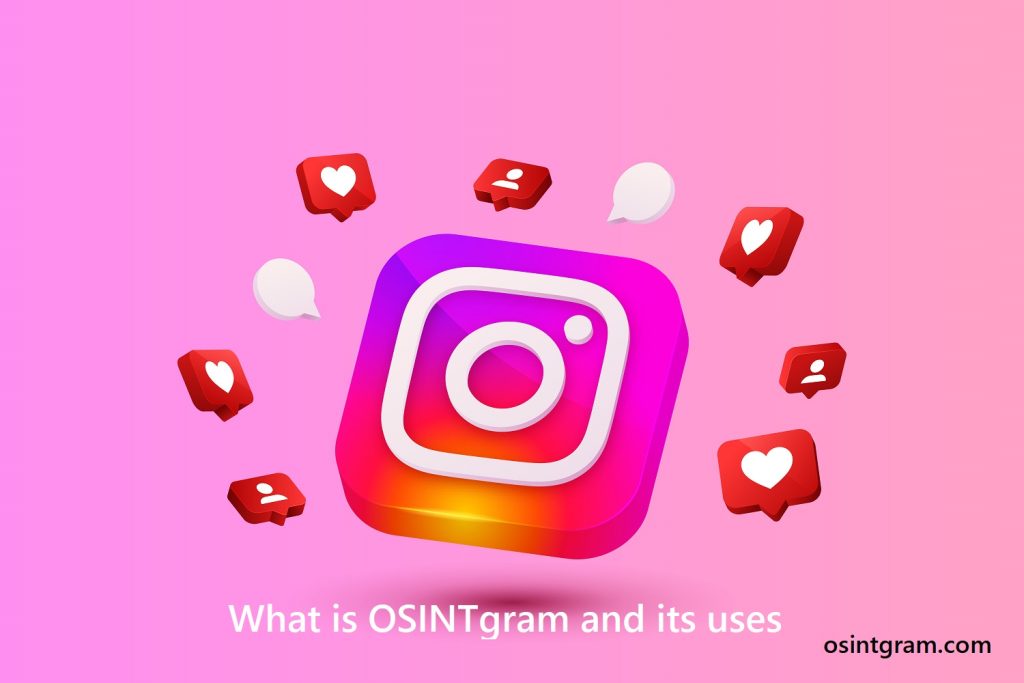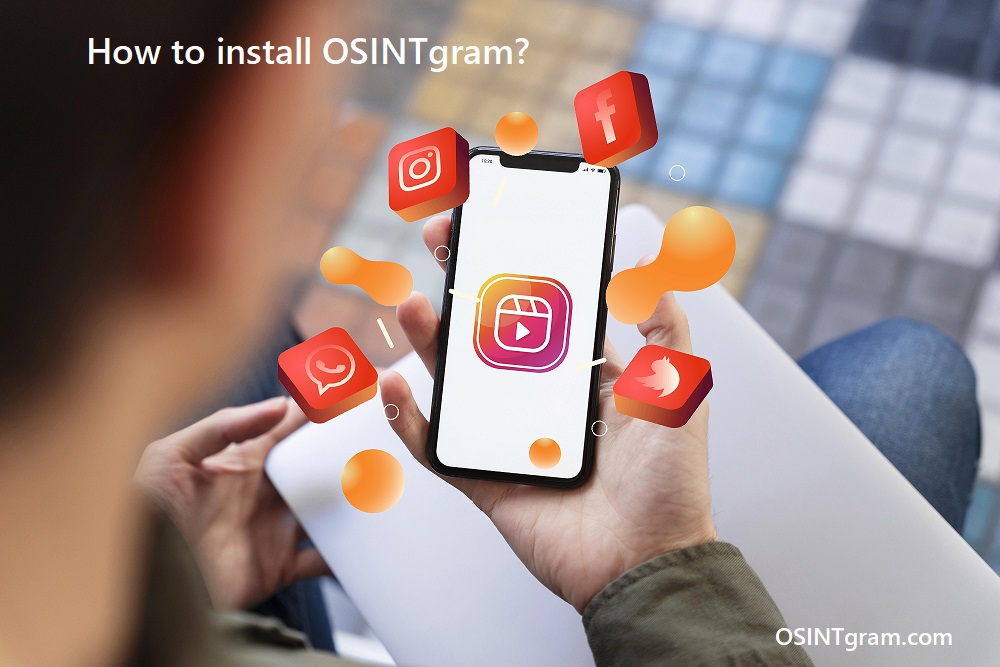The digital age has transformed the way we access and analyze information. Every like, comment, hashtag, or photo uploaded to social media contributes to a massive pool of public data. Investigators, cybersecurity professionals, and researchers often rely on this data for analysis, and one of the most effective approaches for doing so is Open-Source Intelligence (OSINT). OSINT refers to the practice of gathering and interpreting information from publicly available sources such as social media platforms, online forums, blogs, and news websites. It plays a critical role in areas ranging from cybersecurity to journalism, law enforcement, and academic research.
Among the many tools developed to support OSINT, OSINTgram has quickly gained recognition as a specialized and powerful option. As its name suggests, OSINTgram focuses on Instagram, one of the most popular and data-rich social media platforms worldwide. This open-source tool allows users to analyze account information, explore followers and following lists, gather post metadata, search hashtags, and even export results into structured formats like CSV or JSON. For professionals working in digital forensics, ethical hacking, or brand monitoring, OSINTgram provides a streamlined way to understand digital footprints.
What is OSINTgram?
To understand whether OSINTgram is legal, it’s important first to define what the tool actually is. OSINTgram is an open-source intelligence tool designed specifically for collecting data from Instagram, one of the world’s most widely used social media platforms. Written in Python, OSINTgram provides investigators and researchers with a command-line interface to extract, analyze, and organize Instagram account information.
At its core, OSINTgram makes use of publicly available data, a principle that aligns directly with the philosophy of Open-Source Intelligence (OSINT). OSINT simply means gathering data from open and accessible sources—those that do not require hacking, exploiting vulnerabilities, or breaking into private accounts. For example, a user’s public Instagram posts, hashtags, locations tagged in posts, and profile details can all be considered open-source data.
OSINTgram automates the process of gathering such information, which would otherwise require time-consuming manual searching. With a few commands, it can:
- Collect lists of followers and following accounts.
- Retrieve metadata from posts such as captions, hashtags, and geotags.
- Analyze profile information to understand an account’s digital footprint.
- Export findings into structured files such as CSV or JSON for reporting.
Because Instagram is such a data-rich environment, OSINTgram has become particularly popular in several fields:
- Cybersecurity and Ethical Hacking: Security professionals use OSINTgram to understand the public exposure of individuals or organizations. This helps in penetration testing and digital footprint analysis.
- Digital Forensics and Law Enforcement: Investigators rely on it to track suspects, monitor suspicious activities, or uncover connections between accounts.
- Academic and Market Research: Researchers use OSINTgram to analyze trends, hashtags, or the spread of information across Instagram.
- Brand Monitoring: Companies and marketers can track how their brand is represented, monitor influencers, or detect impersonation accounts.
Its open-source nature also makes it accessible to a wide audience. Anyone with Python installed can set it up and begin running commands. This accessibility is a strength, but it is also one of the reasons why legal questions arise: when such a powerful tool is available to everyone, misuse becomes a real possibility.
Understanding the Legal Side of OSINT Tools
The question of whether OSINTgram is legal doesn’t start with the tool itself but with the principle of OSINT. Open-Source Intelligence is, by definition, based on publicly accessible data. Collecting and analyzing public information is generally lawful and widely practiced—not just by investigators, but also by journalists, researchers, and businesses. In fact, many organizations depend on OSINT for decision-making, threat detection, and brand protection.
The tool itself is not illegal. OSINTgram is simply software—open-source code freely shared on GitHub, much like thousands of other research tools. Owning, downloading, or running the software does not break any laws in most jurisdictions. This is a crucial distinction: the legality of a tool does not depend on its existence, but on how it is used.
Where the line begins to blur is in the intent and usage. For example:
- If a cybersecurity professional uses OSINTgram to analyze their own company’s Instagram presence in order to identify risks, this is a legal and ethical use.
- If a researcher studies public hashtags to track social media trends, this too is legal.
- On the other hand, if someone uses OSINTgram to stalk an individual, collect private details, or harass users, they are crossing into unlawful and unethical territory.
In many ways, OSINTgram is like a kitchen knife: harmless in one context (cooking) but dangerous if misused (harm). The tool itself carries no inherent legality or illegality. It is neutral by design. What determines its legal status is what the user chooses to do with it.
Another important factor is platform policies. Instagram’s Terms of Service explicitly prohibit unauthorized scraping or automated data collection. While OSINTgram relies on publicly available data, extensive or abusive use may violate Instagram’s policies even if it doesn’t directly break the law. Violating these terms can result in account bans or restrictions.
Finally, jurisdiction matters. Data privacy laws like the GDPR (General Data Protection Regulation) in Europe or the CCPA (California Consumer Privacy Act) in the United States impose strict rules on how personal data can be collected, stored, and used. Even when data is technically public, using it without proper safeguards could raise legal issues in certain regions.
In short, the answer to “Is OSINTgram legal?” lies in understanding the difference between tool and action. The tool is legal, but actions taken with it may or may not be. Users must approach OSINTgram with awareness, responsibility, and a clear understanding of ethical boundaries.
Is OSINTgram Legal to Use?
When people ask whether OSINTgram is legal, they’re often hoping for a simple yes or no. Unfortunately, the answer isn’t that straightforward. The legality of OSINTgram depends almost entirely on how and why it is being used. The same tool can be perfectly legal in one scenario and completely unlawful in another. To make this clear, let’s break down some examples.
Scenarios Where OSINTgram Is Legal
Research and Academic Studies
Universities and independent researchers frequently study social media data to better understand trends, online behavior, or the spread of information. Using OSINTgram to collect publicly available hashtags or analyze posting patterns is typically considered legal, provided the data is handled responsibly. Since the information is already public, it can be used for statistical or sociological analysis without violating privacy laws, as long as individual identities are not targeted or exposed improperly.
Cybersecurity and Ethical Hacking
For penetration testers, security auditors, and cybersecurity professionals, OSINTgram is an invaluable tool. Companies often hire experts to conduct digital footprint analysis of their brand, employees, and executives. By analyzing publicly available Instagram data, they can identify security risks such as oversharing of sensitive information, impersonation accounts, or leaked metadata in images. In this context, OSINTgram is not only legal but encouraged as part of ethical hacking practices.
Brand Monitoring and Marketing
Businesses rely on social media listening tools to track customer feedback, monitor competitors, or measure the effectiveness of marketing campaigns. OSINTgram can be used to extract hashtags, mentions, and geotags that relate to a particular brand. This allows organizations to protect their reputation and respond to customer concerns. As long as the tool is used within the boundaries of Instagram’s public data, this usage is legal and falls under standard brand monitoring practices.
Digital Investigations by Law Enforcement
Law enforcement agencies also use OSINT techniques for investigations, such as tracking criminal activities, monitoring suspects, or analyzing extremist content. When done under proper legal authority and within jurisdictional boundaries, the use of OSINTgram in these cases is lawful and often critical for public safety.
Scenarios Where OSINTgram May Cross Legal Boundaries
Stalking or Harassment
If OSINTgram is used to collect information about a specific person with the intent to harass, intimidate, or stalk them, the activity is illegal. Even if the data is technically public, the malicious intent and misuse of that information can lead to criminal charges. Privacy laws in many countries classify stalking and online harassment as punishable offenses.
Unauthorized Surveillance
Monitoring individuals without their knowledge or consent, especially when tied to sensitive details like location data, can quickly cross into unlawful territory. For example, using OSINTgram to track someone’s movements via geotags could be considered unauthorized surveillance and may violate privacy protections under laws such as GDPR in Europe or CCPA in California.
Data Misuse for Fraud or Impersonation
Extracting personal data with OSINTgram and then using it for fraud, phishing, or impersonation is unquestionably illegal. Cybercriminals often exploit open-source tools for identity theft, and doing so with OSINTgram could result in severe legal consequences, including fines or imprisonment.
Instagram’s Terms of Service and OSINTgram
Beyond national laws, users of OSINTgram must also consider Instagram’s Terms of Service (ToS). Instagram explicitly prohibits unauthorized scraping, automated data harvesting, and misuse of its platform. While gathering data manually by browsing is allowed, automating the process with tools like OSINTgram can be interpreted as a violation of these terms.
What does this mean in practice?
Even if using OSINTgram is legal in your jurisdiction, Instagram could still ban or suspend accounts that engage in automated scraping.
Users risk losing access to their accounts if they ignore Instagram’s guidelines.
Companies using OSINTgram for commercial purposes may face legal action from Instagram if their data collection practices are deemed abusive.
This creates a dual responsibility for users: ensuring compliance with both local laws and platform rules. While the law might not punish every misuse of OSINTgram, Instagram’s own enforcement policies can still penalize inappropriate activity.
In conclusion, OSINTgram can absolutely be used legally — but only in contexts like research, ethical hacking, and brand monitoring where the intent is constructive and authorized. The moment it is used for stalking, harassment, or unauthorized surveillance, legality is lost. The dividing line is clear: public interest and responsible analysis vs personal targeting and malicious exploitation.
Ethical vs. Unethical Usage of OSINTgram
Like most OSINT tools, OSINTgram is neutral by design — it doesn’t dictate how it should be used. The ethical or unethical nature of its usage depends entirely on the person behind the keyboard. To understand this better, we need to clearly distinguish between ethical OSINT investigations and malicious, unethical misuse.
What Counts as Ethical OSINT Investigations?
Ethical OSINT investigations are conducted with a legitimate purpose and within the boundaries of the law. They focus on using publicly available data in a responsible way, without harming individuals or violating privacy protections. Some key aspects of ethical OSINT usage include:
- Transparency and Consent (Where Applicable)
In cases like corporate security audits, the organization commissioning the investigation is aware of and approves the process. This ensures that the investigation has a clear scope and is not intrusive. - Focus on Security and Protection
Ethical investigators use OSINTgram to detect threats, monitor brand impersonations, and identify vulnerabilities. The aim is to safeguard individuals, businesses, or communities from harm, not to exploit them. - Non-Intrusive Data Handling
Even if data is publicly available, ethical OSINT practitioners minimize unnecessary exposure. For example, instead of publishing personal photos or names, they anonymize the results to highlight patterns and trends. - Contribution to Public Interest
Researchers, journalists, and human rights investigators may use OSINTgram to uncover misinformation campaigns, analyze crisis-related posts, or document violations. In these cases, the tool contributes to broader awareness and accountability.
What Counts as Unethical or Malicious Usage?
On the flip side, OSINTgram can also be misused with harmful intent. This is where ethical lines are crossed, even if the data accessed is technically public. Some examples include:
- Privacy Violations
Targeting individuals to gather personal information such as photos, friends, or location data without their consent. While Instagram content may be public, systematically collecting and repurposing it can still be invasive and unethical. - Harassment and Stalking
Using OSINTgram to track someone’s movements, monitor their activity, or collect personal details for harassment crosses into criminal behavior in many jurisdictions. - Data Misuse for Fraud or Exploitation
Malicious actors may use OSINTgram to steal personal data for phishing, identity theft, or scams. For example, extracting geotagged images to figure out when someone is on vacation could enable burglary — a clear misuse of OSINT data. - Corporate Espionage
Unethical competitors might deploy OSINTgram to spy on rival companies, scrape marketing data, or collect insider details. Such practices not only violate platform policies but may also result in civil lawsuits.
Consequences of Unethical Usage
Misusing OSINTgram doesn’t just raise moral concerns; it can lead to serious real-world consequences:
- Account Bans and Platform Penalties
Instagram enforces strict rules against automated data scraping. If caught using OSINTgram improperly, users risk having their accounts suspended or permanently banned. Businesses relying on Instagram for marketing could face significant losses if their accounts are disabled. - Civil Liability
Victims of unethical OSINT practices may sue for damages, especially in cases of harassment, stalking, or data misuse. Courts may impose fines, injunctions, or orders to stop the activity. - Criminal Charges
In extreme cases — such as stalking, unauthorized surveillance, or identity theft — using OSINTgram unethically can result in criminal prosecution. Convictions may carry fines, probation, or even prison sentences, depending on the jurisdiction. - Reputation Damage
For professionals, unethical use of OSINT tools can destroy credibility. A security researcher or journalist caught misusing OSINTgram could lose their career, as trust and ethical conduct are central to their professions.
Drawing the Line
Ultimately, the line between ethical and unethical use of OSINTgram lies in intent, scope, and respect for privacy.
- If the goal is research, protection, or public interest, the usage leans ethical.
- If the goal is harassment, exploitation, or unauthorized monitoring, it becomes unethical and potentially illegal.
This makes it crucial for users to establish a clear framework before employing OSINTgram:
- Why am I collecting this data?
- Do I have consent or legal grounds?
- Could this information harm someone if misused?
Asking these questions helps ensure that OSINTgram remains a force for good rather than a tool for exploitation.
FAQ’s
Is OSINTgram safe to use?
Yes, OSINTgram is safe as a software tool — it doesn’t contain malicious code. However, how you use it determines whether it’s truly safe for you legally and ethically. Using it for legitimate research, education, or brand protection is generally safe. Using it for stalking, harassment, or fraud is unsafe and may lead to legal trouble.
Can OSINTgram get me banned on Instagram?
Yes. Instagram prohibits automated scraping and data collection. If OSINTgram is linked to your account or activity, Instagram may suspend or permanently ban your profile. This is why many ethical researchers use separate accounts or sandbox environments for testing.
Do I need permission to investigate an account?
If the account is public, you don’t need explicit permission to view its content. However, systematically collecting, storing, or redistributing that data may raise ethical and legal concerns. For private accounts, attempting to bypass access restrictions without permission is illegal and considered unauthorized surveillance.
What’s the difference between legal OSINT and hacking?
Legal OSINT (Open Source Intelligence) relies only on publicly available information that anyone can access. Hacking involves breaching security measures or gaining unauthorized access to private systems or accounts. OSINTgram operates in the OSINT space, but misuse — like bypassing private profiles — can blur the line into hacking.
Can companies legally use OSINTgram for brand monitoring?
Yes, companies can legally use OSINT tools for brand monitoring, competitor analysis, or market research as long as the data is collected from public sources and handled in compliance with data protection laws such as GDPR or CCPA. Misuse, like scraping private data, is not legal.
Conclusion
OSINTgram is a powerful tool that sits at the intersection of technology, cybersecurity, and ethics. As an open-source project designed to collect publicly available Instagram data, it can serve as a valuable resource for security researchers, journalists, digital forensic experts, and organizations looking to protect their brands. However, its power also brings responsibility.
The legality of OSINTgram does not lie in the code itself but in how it is used. When applied for ethical purposes — such as security investigations, research, or monitoring misinformation — it contributes to the safety and awareness of the online community. On the other hand, when used to stalk, harass, or exploit personal information, it can lead to legal consequences, reputational damage, and even criminal charges.
Understanding the boundaries between ethical OSINT and malicious activity is crucial. Users should familiarize themselves with Instagram’s Terms of Service, relevant privacy laws, and the broader principles of responsible investigation. Always ask: Am I using this information to protect, inform, or educate, or am I risking harm to someone’s privacy or safety?



